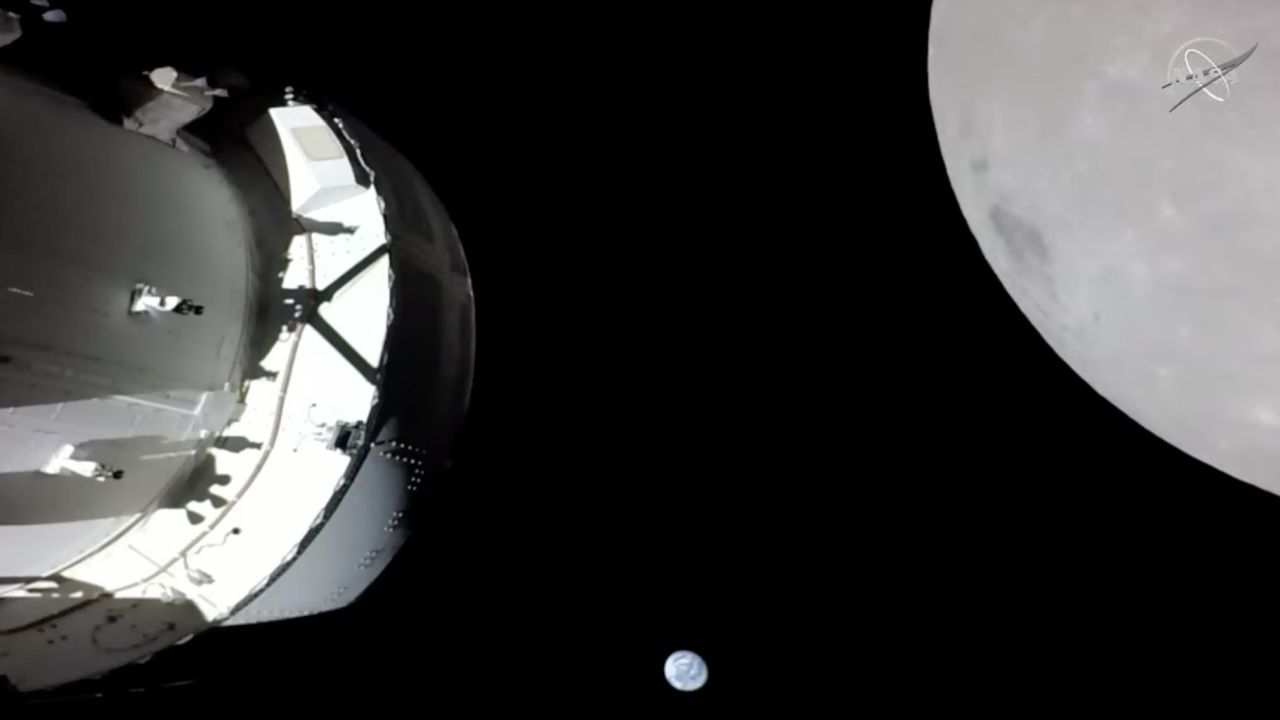Watch Artemis 1 blast off to the Moon 0:59
(CNN) --
NASA's Orion capsule passed some 130 kilometers above the lunar surface early Monday morning, a monumental achievement in the mission designed to test the US space agency's ability to one day return to Earth. astronauts to the Moon.
After its lunar flyby, Orion, which is designed to carry astronauts but carries only inanimate and scientific payloads on its first mission, is expected to travel more than 40,000 miles past the far side of the Moon, the farthest that a spaceship destined to transport human beings has arrived.
Artemis I mission takes flight in historic leap for NASA's lunar program
It's all part of NASA's Artemis program, which aims to establish a lunar outpost that can permanently host astronauts for the first time in history, in the hope of paving the way to one day reach Mars.
The Artemis I mission launched on Wednesday morning when NASA's long-delayed Space Launch System (SLS) rocket launched the Orion capsule into space, cementing the rocket as the most powerful operational launch vehicle ever built.
The thrust of the SLS rocket is 15% greater than that of the Saturn V rocket, which fueled the 20th century moon landings.
NASA's Orion spacecraft approaches its closest flyby of the Moon during NASA's Artemis I mission.
Credit: NASA/YouTube
Orion is now on a 25-and-a-half-day voyage to circumnavigate the Moon.
Monday's flyby of the lunar surface was the closest the Orion capsule will get to the Moon before entering a "distant retrograde orbit," meaning it will circle the Moon in the opposite direction that the Moon travels around. the earth.
advertising
The purpose of this tour is to "test drive" the Orion capsule, as Michael Sarafin, NASA's Artemis mission manager, said last week.
After its return to the Moon, the Orion capsule is expected to return to Earth and make a gentle splashdown in the Pacific Ocean on December 11.
The Artemis I mission shares a spectacular image of Earth after a historic launch
The landing site is off the coast of San Diego, and NASA recovery ships will wait nearby to bring the craft to safety, a practice for future missions that include astronauts.
And this time it will also try to recover some scientific instruments on board that have collected data to help NASA understand how astronauts could be affected by future flights.
Sarafin told reporters Friday that NASA has had to fix more than a dozen problems with the Orion capsule, but overall the spacecraft is doing "really well."
One of the problems that arose was related to Orion's star tracker, a system that uses a map of the cosmos to tell engineers on Earth how the spacecraft is oriented.
Some data readings were not as expected, but NASA officials attributed this to the learning curve involved in flying a new spacecraft.
"We worked on it, and the Orion team showed great leadership," Sarafin said.
"We had knowledge of the system before the mission," he added.
"We had [predictions], whether it was the amount of power we would consume or the amount of propellant or how hot the vehicle would be, and we didn't exactly match that. And in most cases it's working better."
"We log things that don't match our predictions. And the team is spending time looking at it closely to make sure there isn't something else in there that is potentially a latent issue."
Sarafin's comments came before NASA made the final decision on Saturday to put the Orion spacecraft on track to enter its far retrograde orbit around the Moon.
Artemis I Mission

